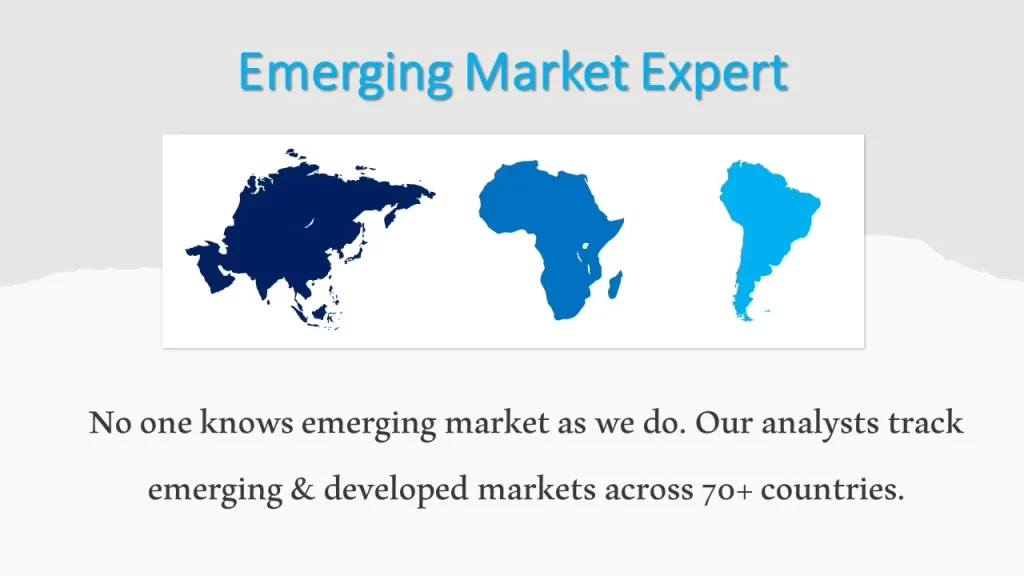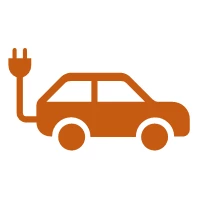Electric Bus Market by Propulsion Type (BEV, PHEV and FCEV), By Consumer Segment (Private Fleet Operators and Government), By Application (Intercity and Intracity), By Seating Capacity (Up to 30 Seater, 31-40 Seater and Above 40) and By Region – Global Opportunities & Forecast, 2023-2030
Electric Bus Market size reached USD 41.6 billion in 2022 and is estimated to reach USD 672.4 billion in 2030 and the market is estimated to grow at a CAGR of 41.6% from 2023-2030.
Introduction of the Electric Bus Market Report
An electric bus is powered by electricity, which is stored on board or can be fed continuously from an external source. The buses mostly store the electricity in on-board batteries; however, when the electricity is not stored on board, it is directly supplied by the outside power source. 99% of the battery electric buses in the world have been deployed in China. This type of bus is often used as city buses as it has a limited range.
To have an edge over the competition by knowing the market dynamics and current trends of “Electric Bus Market,” request for Sample Report here
Market Dynamic
Key Drivers and Emerging Trends
The major factors fueling the global electric bus market includes increasing demand for high-performance and fuel-effective buses, rapid urbanization, and reduction in battery prices. In addition, as per the Electric Bus Market Forecast, the increasing emphasis of government to automate mass transit solutions and intensified government support in the form of subsidies to reduce the cost of electric buses, will encourage the adoption of electric buses. For example, in March 2021, over 421,000 electric buses were in use in China, which amounts to about 99.0% of the global fleet. Electric buses discharge zero or low emission over traditional buses that are powered by diesel, promoting the market growth. Thus, growing emphasis on encouraging of electric transit solutions will augment the Electric Bus Market Size. Other factors including rising environmental concern aided by the greenhouse gas emissions, reducing costs, and improving operational efficiency of batteries are projected to expand the market growth. However, the high cost of electric buses is expected to restrain the Electric Bus market share.
Do you want to know more about the Research process and detailed Methodology, Request Research Methodology of this report
Seating Capacity – Segment Analysis
Based on the Seating capacity, the 31-40 seater segment is predicted to dominate the global electric bus market during the forecast period. The increasing number of electric passenger buses, having 31-40 seats, mostly for the public transport fleet, is a major driver that is responsible for the segment growth. Furthermore, the growing production of electric buses with 31-40 seats, particularly by the leading players such as BYD, Yutong, and Porteera, is further energizing the segment growth.
Consumer Segment – Segment Analysis
On the basis of the consumer, the government segment is anticipated to grow at a faster CAGR during the forecast period. This is mainly due to the increasing focus of government from different countries on using electric buses as a mode of public transportation. In 2020, the government of India announced to introduce 2,000 new electric buses in the capital by the end of 2021, with an aim to reduce the pollution in Delhi.
In case, any of your pain points areas are not covered in the current scope of this report, Request for Free Customization here
Regional – Segment Analysis:
Based on the region, Asia-pacific is projected to lead the global electric bus market during the forecast period. The Asian electric bus market include some of the fastest developing and developed economies of the world. The dominance of the Chinese market and the strong presence of leading OEMs such as BYD, Zhongtong, Ankai, and Yutong, have led to the significant growth of the market in this region. Furthermore, the favorable regulations for electric buses, availability of electric and electronics at a cheaper price range, and the expansion of the charging infrastructure are further increasing the demand of the Asia-pacific electric bus market by region.
Top Market Players
The leading electric bus manufacturers are BYD Motors Inc., Yutong, Proterra, VDS Bus & Coach BV, AB Volvo, Daimler AG, New Flyer Industries Canada ULC, CAF, Ebusco, and ETW International Inc., among others.
Key Developments:
-
- In 2022, BYD delivered 70,000 electric buses worldwide and announced investment plans for the expansion at BYD’s eBus factory in Hungary, supporting its principle of ‘Made in Europe.
- In 2021, BYD acquired a supply contract by the Bogota City Public Transport Authority in Columbia. The contract covered the delivery of 1,002 electric buses in 2021. BYD entered in a partnership with local bus manufacturers namely Superpolo and BUSSCAR for the body parts of bus.
- In 2021, Nova Bus, a subsidiary of Volvo Buses received a supply order from Chicago Transit Authority for 600 new 40-foot electric buses from Nova Bus.
- In 2019, BYD Motors Inc., announced to enter into a joint venture with Toyata, with an objective to increase the research & development of the battery electric vehicles. Through this joint venture, the companies will manufacture customer-centric mobility solutions by merging “the strengthens of the two organizations”.
- In 2019, AB Volvo launched its new electric articulated bus, which has the capacity to carry up to 150 passengers and has 80% less energy consumption as compared to the other corresponding diesel buses.
Segments covered in the Report:
The global Electric Bus market has been segmented on the basis of Propulsion Type, Consumer Segment, application, and key regions. Based on Propulsion Type, the market is segmented into BEV, PHEV and FCEV. Based on Consumer Segment, the market is segmented into Private Fleet Operators and Government. Based on application, the market is segmented into Intercity and Intracity. Based on Seating Capacity, the market is segmented into Up to 30-Seater, 31-40 Seater and Above 40.
For detailed scope of the “Electric Bus Market” report request a Sample Copy of the report
Key questions answered in this research report:
-
- At what pace is global Electric Bus market growing? What will be the growth trend in the future?
- What are the key drivers and restraints in Electric Bus market? What will be the impact of drivers and restraints in the future?
- What are the regional revenues and forecast breakdowns? Which are the major regional revenue pockets for growth in the global Electric Bus market?
- Which length of bus generated maximum revenues in 2022 and identify the most promising length of bus during the forecast period?
- What are the various consumer segments of global Electric Bus market and how they are poised to grow?
- What companies are the major participants in this market and their business strategies, how does the competitive landscape look like?
|
Report Coverage |
Details |
| Market Revenues (2022) |
USD Billion |
| Market Base Year |
2022 |
| Market Forecast Period |
2023-2030 |
| Base Year & Forecast Units |
Revenues (USD Billion) |
| Market Segment | By Propulsion Type, By Consumer Segment, By Application, By Seating Capacity, By Region |
| Regional Coverage | Asia Pacific, Europe, North America, and RoW |
| Companies Profiled | BYD Motors Inc., Yutong, Proterra, VDS Bus & Coach BV, AB Volvo, Daimler AG, New Flyer Industries Canada ULC, CAF, Ebusco, and ETW International Inc., among others; a total of 10 companies covered. |
| 25% Free Customization Available | We will customize this report up to 25% as a free customization to address our client’s specific requirements |
Market Segmentation
Global Electric Bus Market by Propulsion Type
-
- BEV
- PHEV
- FCEV
Global Electric Bus Market by Consumer Segment
-
- Private Fleet Operator
- Government
Global Electric Bus Market by Application
-
- Intercity
- Intracity
Global Electric Bus Market by Seating Capacity
-
- Up to 30 Seater
- 31-40 Seater
- Above 40
Global Electric Bus Market by Region
-
- North America Electric Bus Market (Option 1: As a part of the free 25% customization)
- By Propulsion Type
- By Consumer Segment
- By Application
- By Seating Capacity
- US Market All-Up
- Canada Market All-Up
- Europe Electric Bus Market (Option 2: As a part of the free 25% customization)
- By Propulsion Type
- By Consumer Segment
- By Application
- By Seating Capacity
- UK Market All-Up
- Germany Market All-Up
- France Market All-Up
- Spain Market All-Up
- Rest of Europe Market All-Up
- Asia-Pacific Electric Bus Market (Option 3: As a part of the free 25% customization)
- By Propulsion Type
- By Consumer Segment
- By Application
- By Seating Capacity
- China Market All-Up
- India Market All-Up
- Japan Market All-Up
- Rest of APAC Market All-Up
- RoW Electric Bus Market (Option 4: As a part of the free 25% customization)
- By Propulsion Type
- By Consumer Segment
- By Application
- By Seating Capacity
- Brazil Market All-Up
- South Africa Market All-Up
- Saudi Arabia Market All-Up
- UAE Market All-Up
- Rest of world (remaining countries of the LAMEA region) Market All-Up
- North America Electric Bus Market (Option 1: As a part of the free 25% customization)
Major Players Operating in the Electric Bus (Option 5: As a part of the Free 25% Customization – Profiles of 5 Additional Companies of your Choice)
-
- BYD Motors Inc.
- Yutong
- Proterra
- VDS Bus & Coach BV
- AB Volvo
- Daimler AG
- New Flyer Industries Canada ULC
- CAF
- Ebusco
- ETW International Inc.
Frequently Asked Question About This Report
Electric Bus Market [UP1760-001001]
Rising environmental concern aided by the greenhouse gas emissions, reducing costs, and improving operational efficiency of batteries are projected to expand the market growth.
The major factors fueling the global electric bus market includes increasing demand for high-performance and fuel-effective buses, rapid urbanization, and reduction in battery prices.
The global Electric Bus market has been segmented on the basis of Propulsion Type, Consumer Segment, application, and key regions.
Asia-pacific is projected to lead the global electric bus market during the forecast period. The Asian electric bus market include some of the fastest developing and developed economies of the world.
- Published Date: Mar-2023
- Report Format: Excel/PPT
- Report Code: UP1760-001001
Licensing Options
Single-User License:
The report is used by the purchaser (One Individual) only
Multi-User License:Report is shared with maximum 5 users (employees) including the purchaser of the purchasing corporation only
Corporate License:
Report is shared with unlimited user (employees) of the purchasing corporation only
The report is used by the purchaser (One Individual) only
Multi-User License:Report is shared with maximum 5 users (employees) including the purchaser of the purchasing corporation only
Corporate License:
Report is shared with unlimited user (employees) of the purchasing corporation only
Electric Bus Market by Propulsion Type (BEV, PHEV and FCEV), By Consumer Segment (Private Fleet Operators and Government), By Application (Intercity and Intracity), By Seating Capacity (Up to 30 Seater, 31-40 Seater and Above 40) and By Region – Global Opportunities & Forecast, 2023-2030
$ 4,499.00 – $ 6,649.00
Why GMI Research







